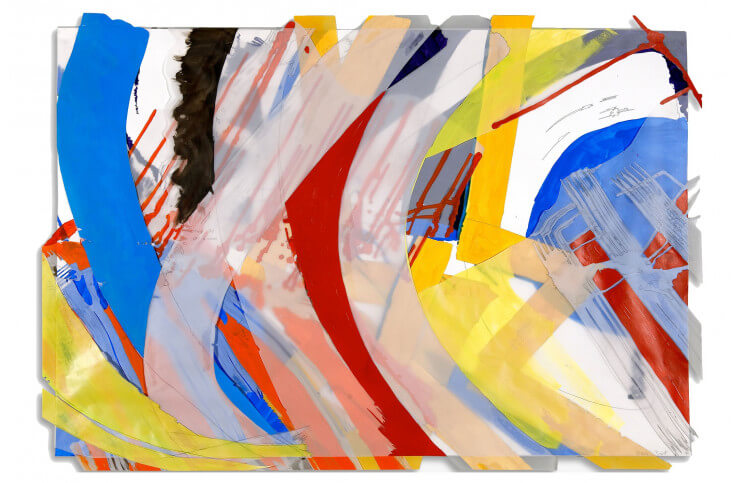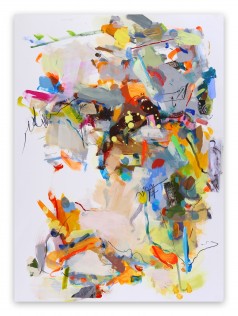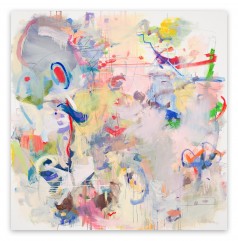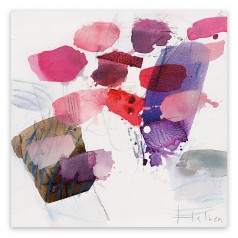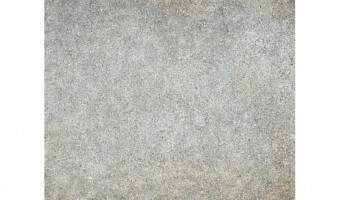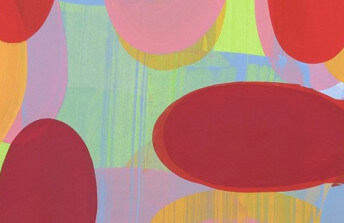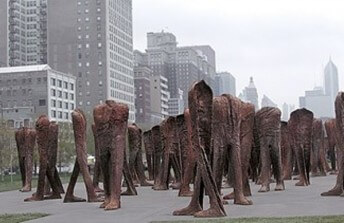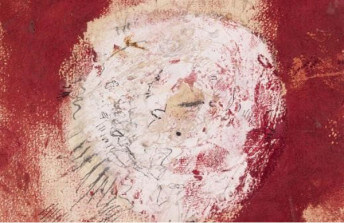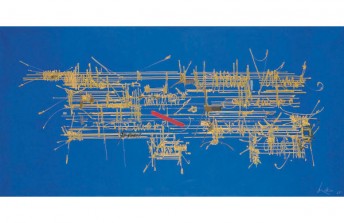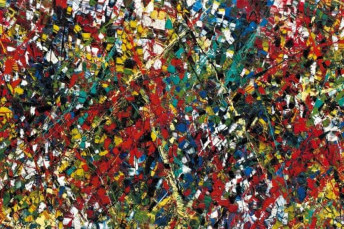Spontaneous, Ecstatic and Free: A Primer on Lyrical Abstraction
Feb 10, 2016
Before discussing what Lyrical Abstraction is, and what it means to art lovers and collectors, we should give due respect to the most persnickety among us by stating that the origin of the term is a topic of sometimes fierce debate. Many in the art world say the term originated in France in the 1940s, when abstraction lyrique was used to describe various sensuous and abstract post-war European artistic movements. Others demand that it was coined in 1969 by Larry Aldrich, an influential American art collector, who used the term to describe work being made by American artists in the late 1960s. For our purposes, let's simply state that both sides of this debate are correct. The French did coin the term abstraction lyrique. And Larry Aldrich did describe work he was buying and exhibiting in 1969 as Lyrical Abstraction.
The Substance Behind the Debate
From the standpoint of the viewer, the debate over who coined the term borders on irrelevant. That's because the underlying experience viewers receive when they encounter the work described by either of these two terms is substantially the same. The European practitioners of abstraction lyrique created works that defied constriction. They were intuitional and free. Their marks seemed spontaneous and romantic. The work was blissfully free of intellectual drudgery. The American Lyrical Abstractionists of the late 1960s achieved precisely the same effect. Their work is sensuous, intuitive and free. Their color choices and methods have a spontaneous, natural sensibility to them. The vibe of the work is calming, whimsical, emotional and unrestrained.
Both the European and American Lyrical Abstractionists of the past, as well as contemporary artists, who are continuing to expand the form, are known for work that is painterly and mature. Lyrical Abstraction past and present has a refined sense of mastery emanating through it. The freedom, intuition and soothing nature of the work comes not from childishness, but from an enlightened effort to be unrestrained.
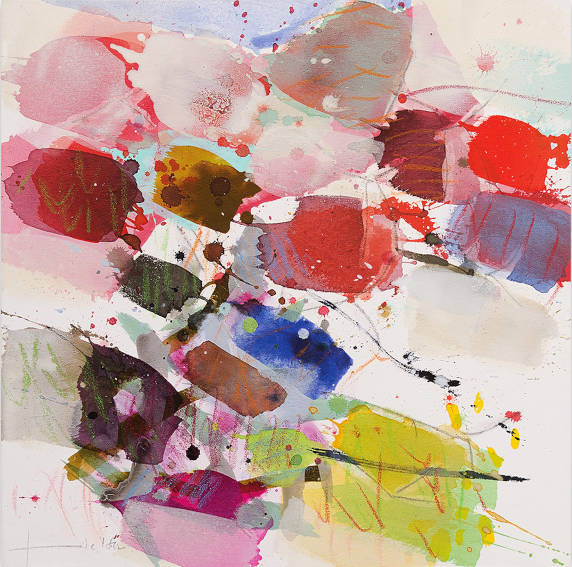
Greet Helsen - Sonnentaler, 2017. Acrylic on canvas. 65 x 65 cm.
The Founders
Georges Mathieu is considered to be one of the key figures in European abstraction lyrique. Mathieu's work evoked a sense of unrestrained freedom and wild movement across the canvas. He was an avid theorist and published widely his ideas on what Lyrical Abstraction should mean. He formulated the following four ideas about the style:
*It should be fast: The artist should work quickly so that the gestures and marks cannot be interfered with by the artist's conscious mind.
*Shapes should be unrecognizable: The artist must not rely on, nor reference, any pre-existing forms.
*It should be spontaneous: The work should not be intellectualized or planned. It should be spontaneous and unconscious.
*It should be ecstatic: The artist should seek a sense of release from self-control.
Dan Christensen is one of the founding painters of the American school of Lyrical Abstraction. The work for which he is most famous utilized spray guns to create complex, vibrant and spontaneous linear patterns across canvases. The playful, erratic and vibrant nature of Christensen's work strongly evoked references to abstract expressionism, while the calming backgrounds invite comparisons to the color field movement.
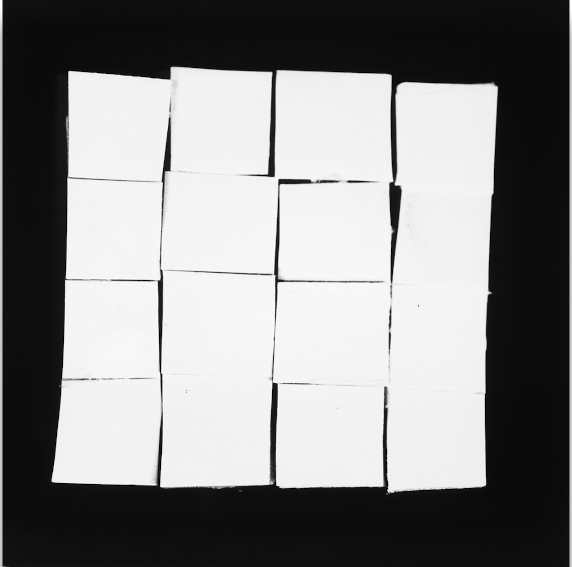
Tenesh Webber - Boxy, 2005. Black and white photograph. 50.8 x 50.8 cm.
Modern Processes At Work
Contemporary painters making explorations into Lyrical Abstraction are adding stimulating mediums and methods into the conversation. Painter Greet Helsen works with diluted acrylics, which achieve a serene sense of muted transparency on the canvas, which she uses to layer evolving compositions of shape and color. Helsen is a Belgian born artist working in Switzerland. Her work is simultaneously subdued and alive. It forms a natural contemporaneous bridge between past and present, as well as bringing together both the European and American expressions of the style.
Tenesh Webber, a Canadian currently working in the US, makes stunningly contemporary work that combines the roots of Lyrical Abstraction with a profound sense of the current digital age. In a sense, she is a photographer, but her technique incorporates multiple disciplines and mediums. She begins with an intuitional sketch, which she then further develops by making marks on Plexiglas using markers and thread. After producing multiple "plates" in this way, she layers the sheets of Plexiglas and uses them to create the final product, a "cameraless" photograph. The resulting images contains much of the whimsy and experimentation of Lyrical Abstraction while adding a distinctly contemporary edge.
The largely self-taught American artist Ellen Priest perhaps most distinctly represents contemporary Lyrical Abstraction at work. Her jazz-inspired creations contain the wildness, the passion, the sensuality and the newness of shape so cherished by the European founders of the style. Her bright-colored canvases offer the perfect update to the style. They at once contain something primitive while also giving a hint to Lyrical Abstraction's potential future.
Featured image: Ellen Priest - Jazz: Thinking Out Loud, Reaching for Song 31, 2011. Papers, oil, flashe, pencil, MSA gel. 81.3 x 119.4 cm.
Featured Artists

Ellen Priest
1951
(USA)American
Tenesh Webber
1963
(USA)Canadian
Gina Werfel
1951
(USA)American
Greet Helsen
1962
(Switzerland)Belgian
